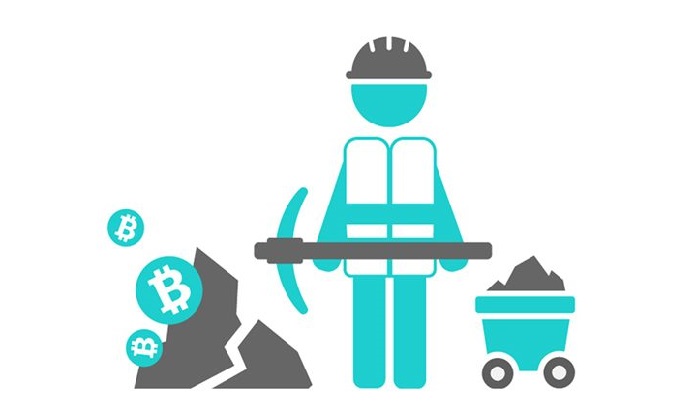
Oct
The Consensus algorithms in Blockchain!
What is Blockchain Technology?
As we all know, Blockchain is a chain of blocks that connects information securely by generating “Hash” for every single transaction made by the registered user. These hashes aids in identifying a block and all its contents are always unique; just as a fingerprint. They have an interesting property, once the list of records are fed inside, it cannot be reversed or deleted. It is a distributed ledger that is completely open to anyone with authentication.
What is Consensus Algorithm?
Blockchain Consensus algorithms accords keep all the protocols of the chain connected with each other while providing an answer to the question: What determines the information to be added?
As Blockchain technology allows any number of users to store information in the chain, consensus confirms, review the records before synchronizing it into the link.

The consensus algorithm is a method, where all the peers of the blockchain network frame a general agreement on the on-going state of the distributed ledger. By agreeing, it establishes trust and reliability between the unknown peers in a digitalized environment. Essentially the consensus algorithms verifies that every new record that is added to the Blockchain is the only single value that is agreed upon by all the protocols linked in the Blockchain.
To put in a word “Consensus Algorithm” is a “Self-Auditing Ecosystem” of Blockchain Technology.
Let’s take a look at different consensus algorithms, before putting them into use…!
Different Types of Consensus Algorithm:
1.Proof of Work! (PoW)
First of all, Let’s understand with the basic definition,
Proof of work (PoW)validates every created transaction in the chain and ensures to alert if anything goes wrong, such as spending the same fund more than once.

Proof of Work is a consensus mechanism introduced by Bitcoin, in the year 1993. PoW’s process is known as “Mining” and “Miners” are nodes connected on the network. The PoW comes in the form of an answer to the mathematical puzzle, one which arrives after a considerable amount of work. The miners’ process the network transactions and take up the fees as their payment for the effort reimbursed.
2.Proof of Stake! (PoS)
Proof-of-Stake (PoS) algorithms achieve consensus by demanding the users to stock a number of their coins, which offers positive chances to get chosen to validate blocks of transactions and get rewarded.

In PoS, the first point considered in a selection process is their owned stake. Every validator must own a coin in that particular blockchain network.
In Proof of state system, a person can validate a block depending on the coins he/she holds. It means if a person owns more bitcoins, then opportunity to resolve a block is higher and vice versa.
3.Proof of Importance! (PoI)
As the name suggests, PoI assigns miners with the highest importance score to determine which miner is qualified to add the new block of transactions to the prevailing chain.
![]()
The “Importance score” earned is determined by various factors such as the number of coins held, network & transactional activity, reputation and how many transactions are successfully completed.
This consensus mechanism focuses on bring in involved investors rather than the one who simply passes time by holding an inactive account.
4.Proof of Burn! (PoB)
Proof of Burn is basically a substitute consensus algorithm that tries to address the energy consumption wastages, takes place in the Proof of Work. The one-mind intention behind the Proof of Burn is that miners are supposed to burn their coins to mine in a POB consensus protocol.

The miners of PoB send across their stakes to unspendable address (ie) eater’s address,thus the sent coin leaves the block and the next chain hash generation gets ceased, but the network remains agile and active. Once the coins are burnt, the users get rewarded.
5.Proof of Elapsed Time! (PoET)
PoET is one of the popular consensus algorithms, that is frequently used in “Permissions blockchain networks” to decide & declare the mining block winners on the network.

Permissioned blockchain networks are those, which demands any prominent participant to identify themselves before entering into the network. Based on the old “Fair lottery” system where every single node is likely to get chosen. It functions in the principle of spreading the chances of winning genuinely across the largest possible number of protocol participants.
6.Proof of Capacity! (PoC)
Rather than constantly altering numbers in the block header and hash for the Blockchain network, Proof of Capacity consistently focuses on plotting your hard drive -it calculates and stores solutions on your system, even before the mining begins. If your hard drive comprises of fastening solutions for the blockchain chain, your chance of winning the lottery is high!

The plotting of the drive is actually similar to mining a block in the network; Depending on the size of your hard drive, it can take even days or weeks to generate uniques plots files.
Proof of Capacity is relatively a new technology, It awaits its turn to face challenges in the real world.
7.Proof of Activity! (PoA)
Once the block is created is then committed to the blockchain. Proof of activity ensures that all the transactions arriving on the blockchain are genuine and all the users come under precise agreement of distributed ledger.

Proof of Activity is a mixed approach of Proof of Work and Proof of stake, attempts to bring the best of both. In POA, the mining process begins as a standard POW process where different miners trying to beat each other with exemplary computing standards to find a new block. When a new block is mined, the procedure switched from PoA to PoS, with the newly identified block which encompasses only a header and the miner’s reward address.
To Close!
There is no denying that Consensus algorithms are an exceptional add-on that could be destined to change the way we haven’t begun to explore Blockchain chain technology.

The consensus algorithm is an interesting solution for the issues that arise in the Blockchain surface.
I hope this writing enriched your preception on Consensus Algorithm!
For more visionary content, stay connected with us!


Comments